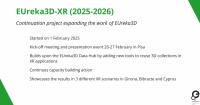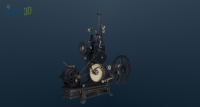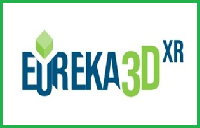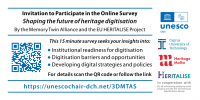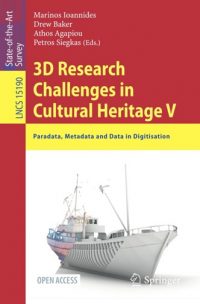The second Proofs of Concept phase in the DCH-RP project takes into account both the results of the first Proofs of Concept and the intermediate version of the DCH-RP Roadmap to Preservation.
During this second round of experiments, tools and services developed in other FP7 projects have been taken into account to be tested by memory institutions. MoUs were agreed and signed with these projects to underpin and secure support for the experiments.
Focussing more on integrated solutions and services, it is even more important to assess the software for the two most paramount requirements regarding the targeted users:
- Ease of use of the tool or service for the end user
- Ease of installation/provisioning for small IT departments or IT-experienced individuals.
The experiments cover a wide variety of solutions that have the potential to implement parts of the DCH roadmap to a satisfactory level, or with reasonable integration effort.
⇒ Download here the first version of the report on the second Proof of Concepts ⇐
Experiment 1 explores a tool (“Matchbox”) developed by the SCAPE project that allows automating the task of finding duplicate images in a set of files. “Data hygiene” activity is a necessary filter for diligently preparing a dataset for archiving, and for regular quality assurance and repository certification for preservation.
Experiment 2 will look at the HAPPI (Handling Authenticity Provenance and Persistent Identifiers) service developed by the SCIDIP-ES project: Cultural data is often included time and again over a long period of time in various projects, which raises a number of needs and requirements as follows:
- Digital asset authenticity – establishing and maintaining the originality of the asset
- Data provenance – Keeping a trail of data usage events for audits and data usage indication
- Data reference persistence and validity – Idempotent data reference/identifier resolution over time and space to the correct storage location
Experiment 3 assesses a combination of services provided by the EUDAT project (B2SHARE and B2SAFE) in combination with a service (Platon) provided by PSNC to its national digital libraries and archives. The aim is to evaluate EUDAT’s services for curating and publishing a research community’s digital assets, in DCH-RP’s case the preservation of digitised and born-digital cultural heritage.
Experiment 4 is investigating some of the results of the experiments in the first Proofs of Concept phase. More specifically, this experiment revisited the use case of uploading digital assets to a remote Grid/Cloud infrastructure in conjunction with the e-Cultural Science Gateway (eCSG) developed by INFN-Catania. Including federated identity management and AAI into this experiment, this experiment is addressing two of the main outcomes of the previous experiment in the first PoC phase.
Experiment 5 concludes the second PoC phase with the aim of assembling a general-purpose digital preservation platform implementing a Service oriented Architecture (SOA). The focus of this experiment lies on reducing the total cost of ownership (TCO) of such a preservation platform through integrating as many generic services as possible, implementing as many preservation-specific standards as necessary, and addressing the needs of as many user communities as is feasible. In collaboration with the APA (through the APARSEN project) this experiment will also explore how an external, independent service provider might offer services around such a platform to the target market while integrating underpinning services delivered by, for example, EGI or EUDAT, or other suitable infrastructure providers.


 If you have interesting news and events to point out in the field of digital cultural heritage, we are waiting for your contribution.
If you have interesting news and events to point out in the field of digital cultural heritage, we are waiting for your contribution.





